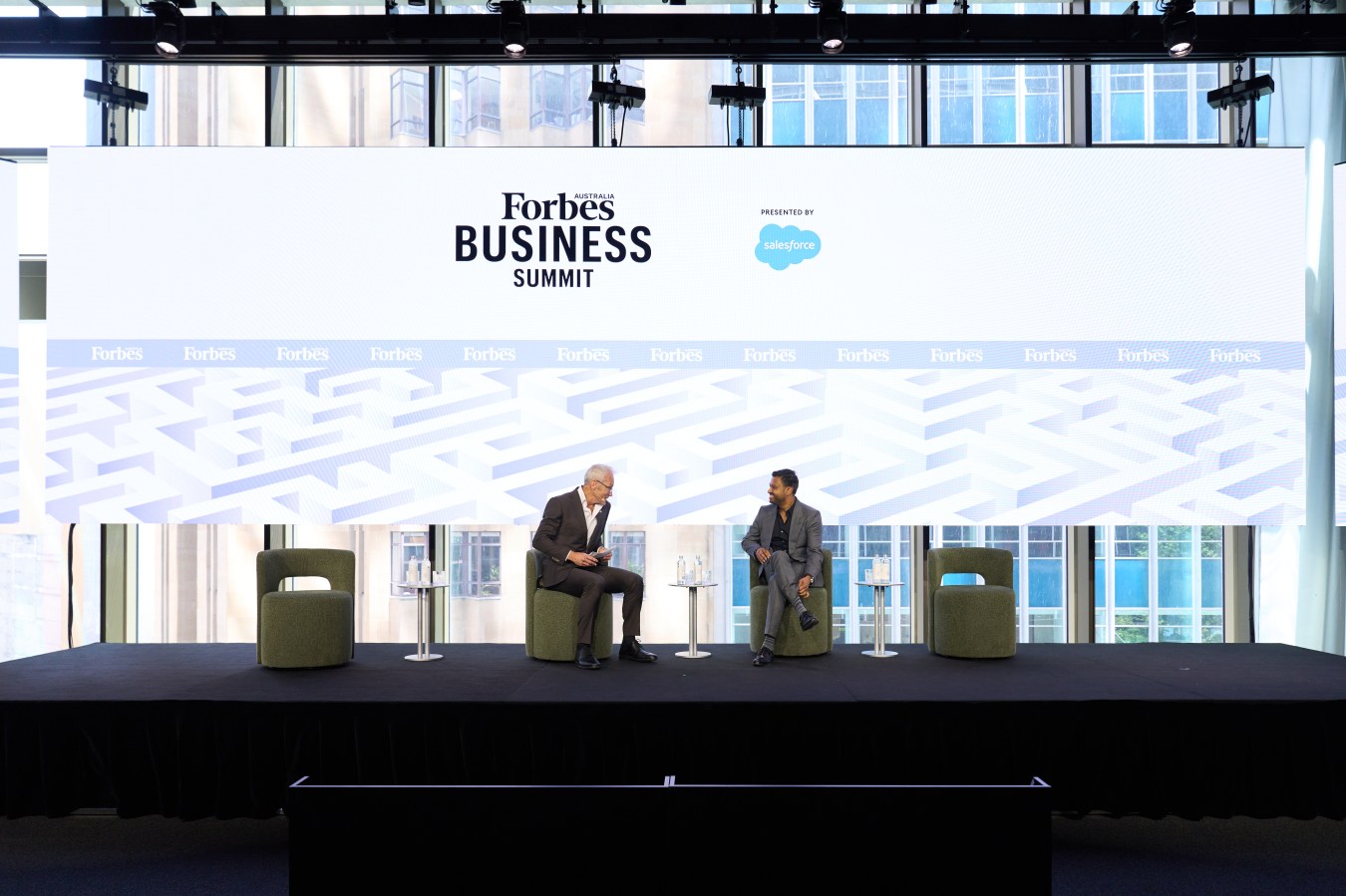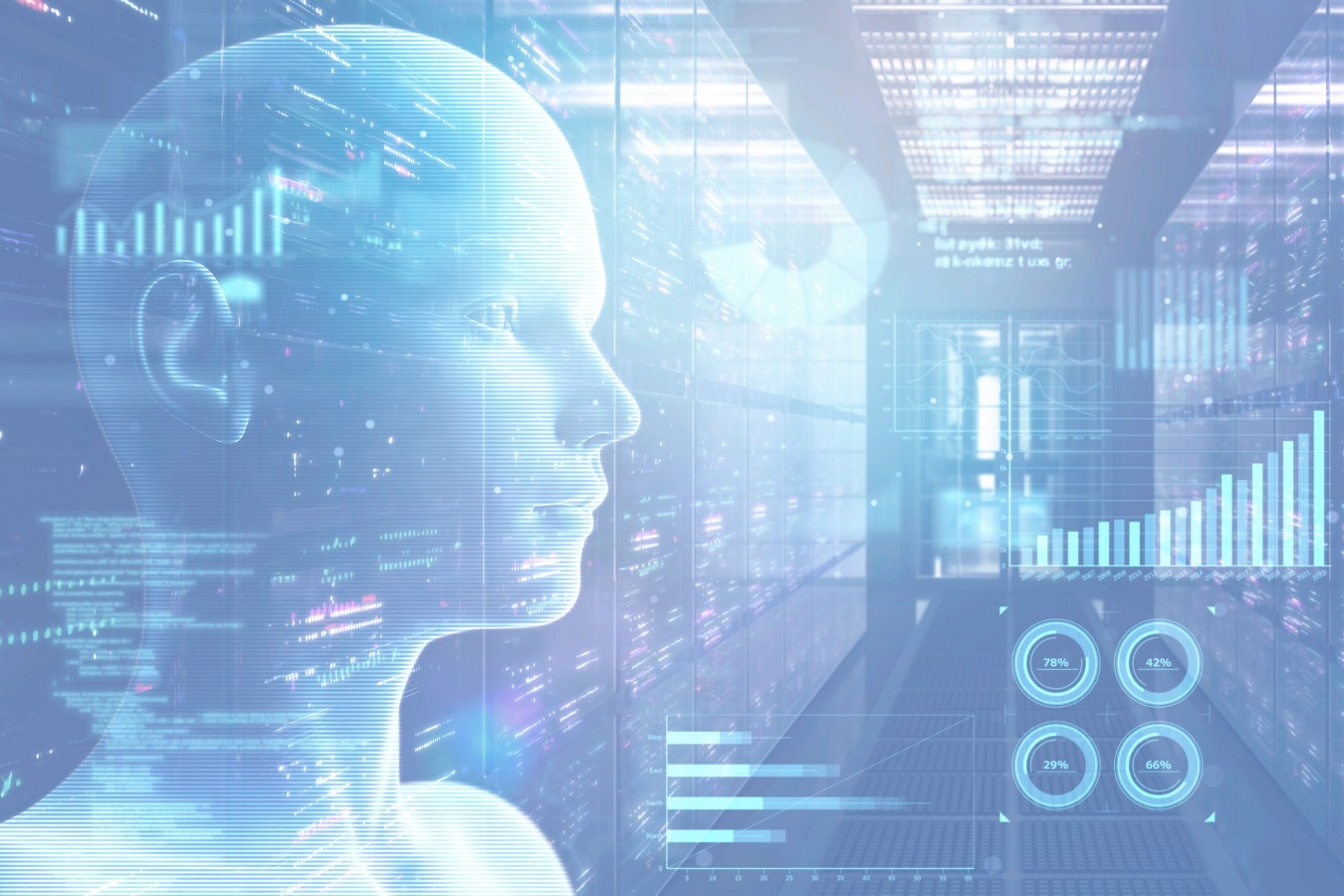Business analytics, science, medical diagnostics and AI training are the most in-demand AI jobs, according to Australia’s 2025 Artificial Intelligence Ecosystem report – these are the cities where to find them.

With all of the buzz about AI, it is not surprising that hiring in the space has more than tripled over the last decade. A new report from Australia’s National Artificial Intelligence Centre (NAIC) reveals energy, resources, utilities, and healthcare are the sectors most commonly utilising AI.
“The opportunity is out there and growing in Australia,” says Lee Hickin, NAIC’s Executive Director.
Where that opportunity exists was also revealed in the new research.
“AI hiring remains disproportionately concentrated, with 100 companies accounting for 58% of all AI job postings. Additionally, inner Sydney, Melbourne, Brisbane and Perth accounted for 64% of position locations.”
Twenty-five ‘dense clusters’ of AI opportunity, led by the aforementioned capital cities, are home to 858 AI companies.
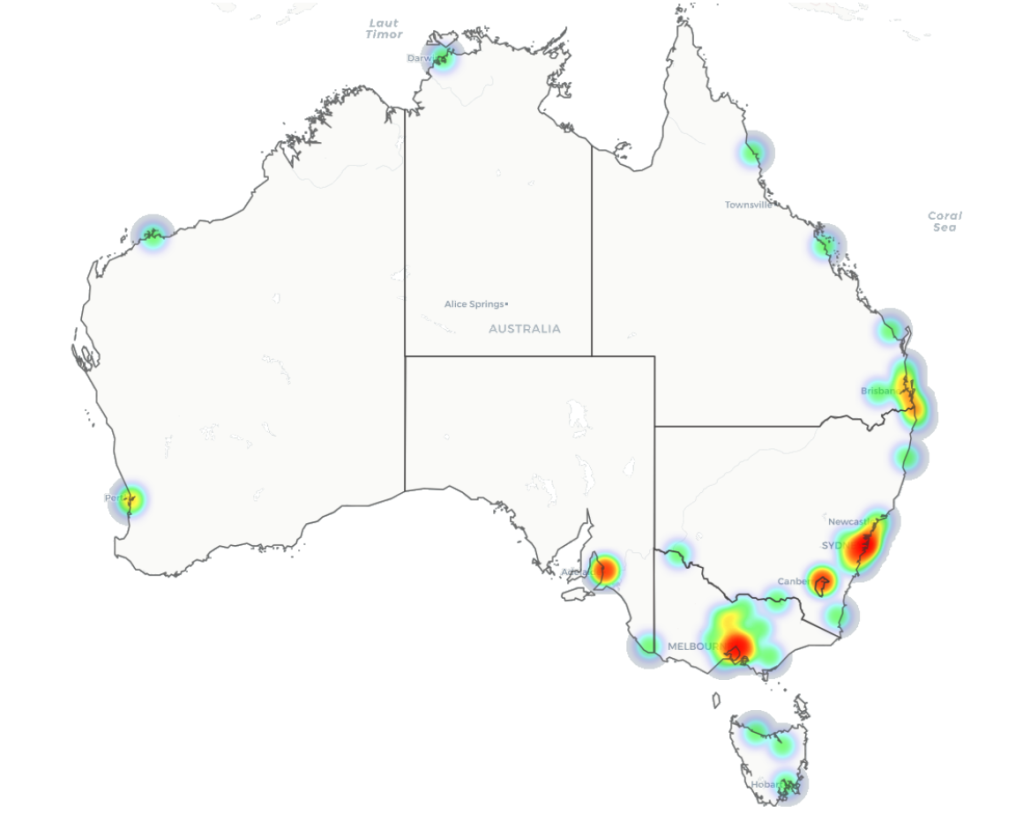
“Melbourne’s central business district emerged as Australia’s largest AI cluster with 188 companies,” the report reads. “Perth focuses on resource applications, Canberra on government and defence, and regional centres [are] developing niche capabilities, like digital media in Maroochydore on Queensland’s Sunshine Coast.”
The release comes as new research shows Australians are growing more open to AI technologies, though many remain wary of its risks.
In April, KPMG released its AI Trust and Attitudes report – led by Dr Nicole Gillespie, Chair of Trust at Melbourne Business School – which found that while interest in AI is rising, trust in its responsible use remains a major hurdle.

“The public’s trust of AI technologies and their safe and secure use is central to acceptance and adoption,” says Gillespie.
“Yet our research reveals that 78% of Australians are concerned about a range of negative outcomes from the use of AI systems, and 37% have personally experienced or observed negative outcomes ranging from inaccuracy, misinformation and manipulation, deskilling, and loss of privacy or IP.”
Stanford’s HAI Global AI Index
Over the last two years, public sentiment about AI has become more positive, yet is still largely sceptical, the HAI Global AI Index reveals. In 2022, 37 per cent of Australians believe AI products and services offer more benefits than drawbacks. Two years later, that statistic has jumped to 44 per cent.
Other takeaways from the global Stanford research include AI systems making considerable progress in generating high-quality video and outperforming humans in time-constrained programming tasks.
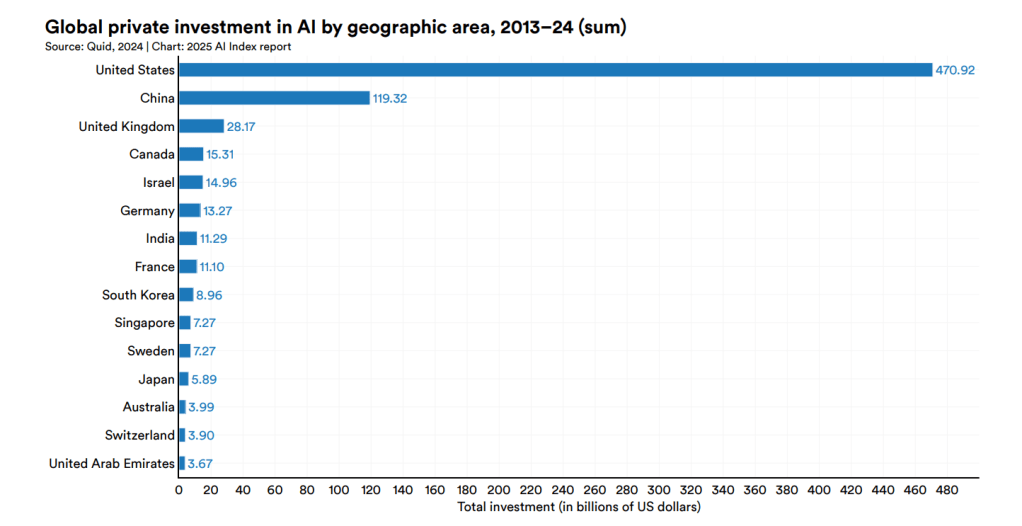
US private investment in AI accelerated to almost USD$110 billion. It was just USD$4.5 billion in the UK. Over the course of the last decade, the UK – home to Google’s DeepMind specialised AI unit – has invested USD$28 billion. In that same period, the US invested USD$470.9 billion and Australia USD$4 billion, according to the 2025 Stanford AI Index report.
In China, where significant AI investment comes from the government, public sentiment about the technology is 83 per cent optimistic – the highest in the world. While private investment in China reached just USD$9 billion last year, the communist nation continues to lead the world in AI academic publications and patents.
Australia’s NAIC research released this week states that just 629 patents were lodged in Australia over the last decade, and while the number of research publications grew by 135 per cent – primarily focused on advanced manufacturing, resources, construction and healthcare – considerably more work needs to be done to keep pace with other nations.
“Australia made up just 0.18% of global AI patents over the past 10 years. This shows the country needs to do more to turn research into market-ready products,” the NAIC report states.
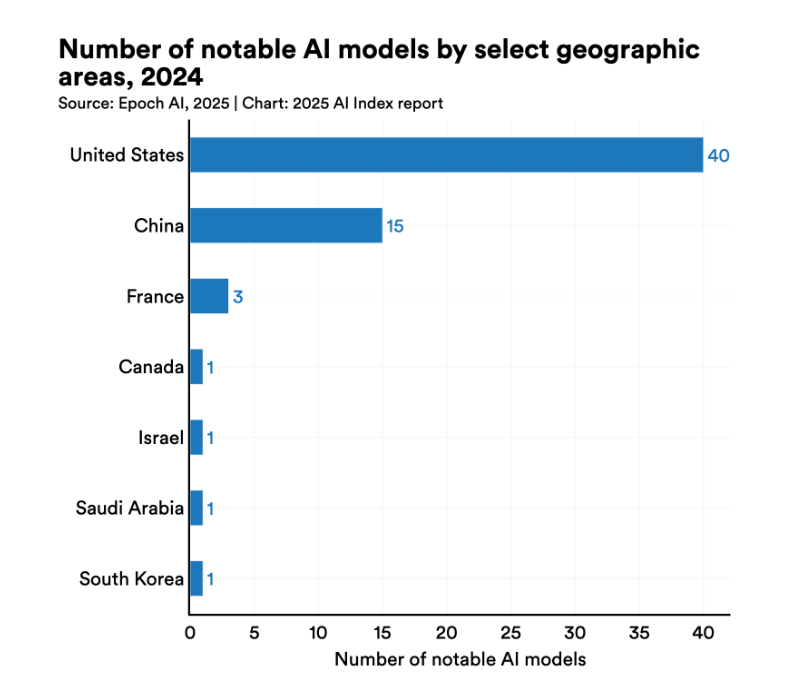
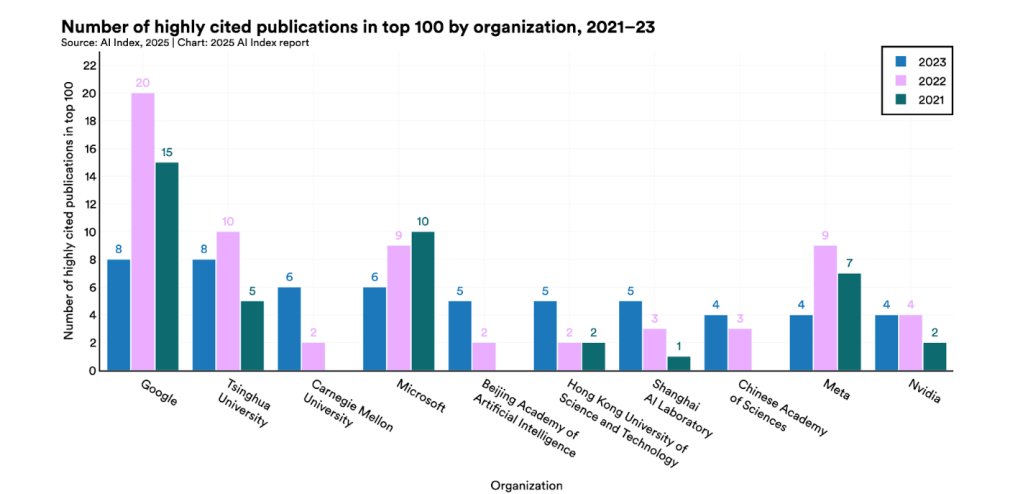
“A significant imbalance exists between knowledge production and commercialisation, with Australia generating about 1.88% of global AI publications but only 0.18% of global patents. This is a ratio of nearly 23 publications per patent.”
The delta between AI publications and patents is particularly evident in deep learning and reinforcement learning, the research reveals, and presents an economic challenge.
“This disparity significantly exceeds global averages and indicates persistent challenges in translating research into commercial applications.”
Australian AI publications
Australian researchers published almost 100,000 AI papers over the last decade.
“Computer science leads AI publishing with 35,847 publications representing approximately 18% of Australia’s total AI research output,” the report states.
“However, what’s particularly noteworthy is the substantial presence of Medicine, which accounts for about 16% of AI publications (31,567 papers), indicating robust integration of AI technologies in healthcare research.”
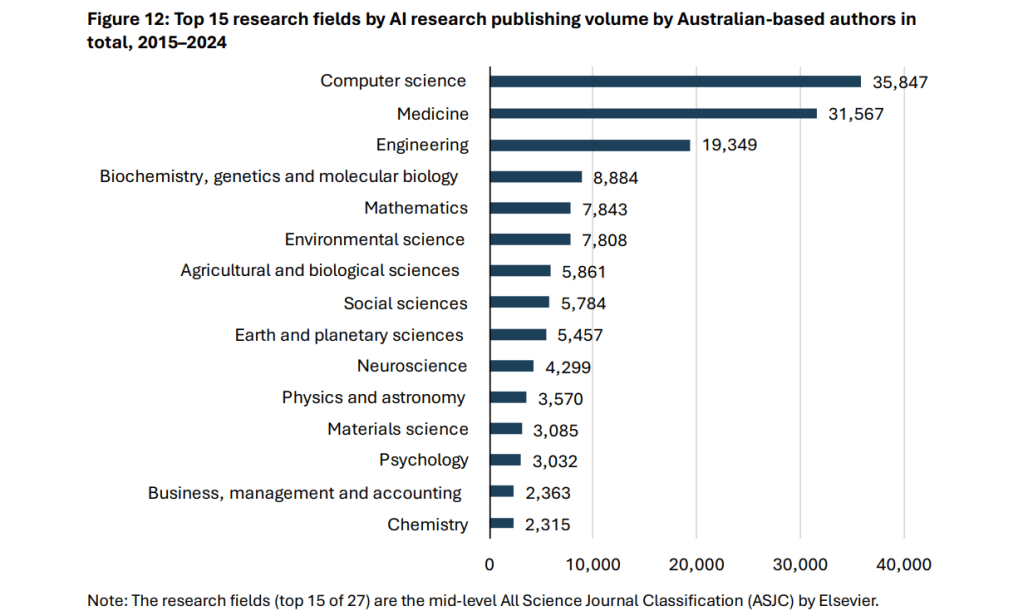
Rounding out the top 3 categories for academic publishing is engineering, which accounts for around 10 per cent of papers. It is closely followed by the Life Sciences category, combining biochemistry, genetics and molecular biology, agricultural and biological sciences, and neuroscience.
“This suggests strong adoption of AI methods in biological and medical research applications,” the report reads.
It is these kinds of insights that can be used to prepare the country to move forward into an AI future, NAIC’s executive director Hickin says.
“This report is a critical data point that helps us to identify where our national opportunity lies, where we are growing AI adoption and the impact AI is having on Australian industry.”
Look back on the week that was with hand-picked articles from Australia and around the world. Sign up to the Forbes Australia newsletter here or become a member here.

